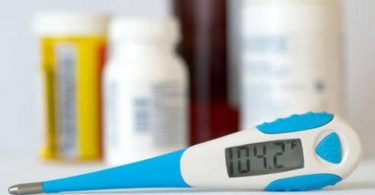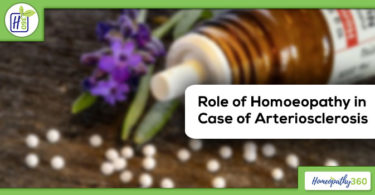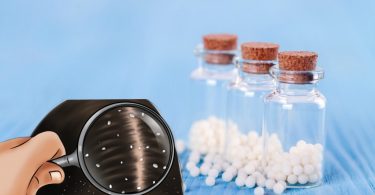Authors:
Dr. Ashok Yadav, HOD Dept. Of Practice of Medicine (Hom.) Dr. M.P.K. Homoeopathic Medical College, Hospital and Research Center. Homoeopathy University, Jaipur.
Dr. Bhupendra Arya , MD Scholar, Department of Practice of Medicine (Hom.) , Dr. M.P.K Homoeopathic Medical College, a constituent college of Homoeopathy University, Jaipur.
Dr. Apurva dixit , MD Scholar, Department of Practice of Medicine (Hom.) , Dr. M.P.K Homoeopathic Medical College, a constituent college of Homoeopathy University, Jaipur.
Dr. Yogita kumari , MD Scholar, Department of Practice of Medicine (Hom.) , Dr. M.P.K Homoeopathic Medical College, a constituent college of Homoeopathy University, Jaipur.
Abstract: Tinea corporis is a superficial dermatophyte infection characterized by either inflammatory or noninflammatory lesions on the hairless skin (i.e., skin regions other than the scalp, groin, palms, and soles). [1] This article provide information about Tinea corporis along with homoeopathy medicine and important rubric from J.T. kent Repertory4, Boericke Repertory5 .
Keywords: Tinea corporis, homoeopathy
Introduction: Tinea corporis is a superficial dermatophyte infection characterized by either inflammatory or noninflammatory lesions on the hairless skin (i.e., skin regions other than the scalp, groin, palms, and soles). [1] Tinea corporis has annular lesions with active periphery showing population, vesiculation, and scaling. [2]
Causative agent: Three kind of dermatophytes: Trichophyton, Microsporum and Epidermophyton,
Types-
• Tinea corporis gladiatorum :-This type is a dermatophyte infection spread by skin-to-skin contact between wrestlers; it often manifests on the head, neck, and arms, which is a distribution consistent with the areas of contact in wrestling.[1]
• Tinea incognito :-This is tinea corporis with an altered, non classic presentation due to corticosteroid treatment.[1]
• Majocchi granuloma :-This type of tinea corporis is a fungal infection of the hair, hair follicles and often surrounding dermis. Typically caused by Trichophyton rubrum, it manifests as perifollicular , granulomatous nodules typically in a distinct location, which is the lower two thirds of the leg in females, with an associated granulomatous reaction. Majocchi granuloma often occurs in females who shave their legs.[1]
• Tinea imbricate :-Another type of tinea corporis, this form is found mainly in Southeast Asia, the South Pacific, Central America, and South America. Tinea imbricata is caused by T concentricum and is recognized clinically by its distinct, scaly plaques arranged in concentric rings.[1]
Signs and symptoms :
• Typically, the lesion begins as an erythroderma , scaly plaque that may rapidly worsen. Large, erythematous, scaly plaque.
• The inflammation can cause scale, crust, papules, vesicles, and even abscess to develop, especially in the advancing border
• Following central resolution, the lesion may become annular in shape. Annular plaque.
• Rarely, tinea corporis can present as purpuric macules [1]
• Infections due to zoophilic or geophilic dermatophytes may produce a more intense inflammatory reaction than those caused by anthropophilic microbes.[1]
Complication:
• Tinea incognito
• Dermatophytide reaction: Inflammatory tinea infection (e.g., kerion, tineapedis) may be associated with appearance of vesicles on the palms and soles.
• Cicatricial alopecia: Though Tinea Capitis generally does not cause cicatricial alopecia, kerion (inflammatory tinea capitis) and favus can cause permanent hair loss.[2]
Diagnosis: Typical clinical morphology as well as demonstration of fungal elements, using (KOH ) potassium hydroxide preparation.
Management:
General measures includes keeping area dry, avoiding use of synthetic clothes. In recurrent infection, prophylactic use of antifungal talcum powder.[2] Topical antifungal agents are usually effective. Tinea rubrum infections may be resistant to treatment. Oral griseofulvin is the drug of choice.[3] Topical therapy with imidazoles or allylamines for localized infection while nail infection, scalp infection, and extensive skin infection to be treated with oral terbinafine or griseofulvin or itraconazole.[2]
Some important rubrics from different repertories related to tinea corporis:4,5
Rubrics Medicines Repertory
Skin ; Eruption ; herpetic ; circinate
Arsenicum album Kent
Skin ; Eruption ; herpetic ; circinate;spring,every Sepia
Kent
Head;Eruption;herpes;circinatus
Calc., Dulc., phyt., sep., tell., tub. Kent
Face;Eruption;herpes;circinatus Anag., bar-c., calc., cinnb., clem., dulc., graph., hell., kali-chl., lith., lyc., nat-c., nat-m., phos., sep., sulph., tarent., tell., Tub. Kent
Skin;Tinea;Favosa Agar., Ars. iod., Brom., Calc. c., Dulc., Graph., Hep., Jugl. r., Kali c., Lappa, Lyc., Med., Mez., Oleand., Phos., Sep., Sulphur. ac., Sul., Ustil., Vinca, Viola tr. Boericke
Skin;Tinea;Versicolor Bac., Chrysar., Mez. , Nat.ars., Sep., Sul., Tellur. Boericke
Skin;Tinea;Trichophytosis-ringworm Ant. c., Ant. t., Ars., Bac., Calc. c., Calc. iod., Chrysar., Graph., Hep., Jugl. c., Jugl. r., Kali s., Lyc., Mez., Psor., Rhus t., Semperv. t., Sep., Sul., Tellur., Tub., Viola tr. Boericke
Skin;Tinea;Trichophytosis-ringworm;intersecting rings, in,over great portion o body;fever;great constitutional disturbances tellur Boericke
Skin;Tinea;Trichophytosis-ringworm;isolated spots,in,on upper part of body Sepia
Boericke
Skin;Herpes(tetter);circinatus;intersecting rings,in tellur Boericke
Skin;Herpes(tetter);circinatus;isolated spots,in Sepia
Boericke
Skin;Herpes(tetter);circinatus;Tonsutans Ars. s fl., Bar. c., Calc. ac., Calc. c., Chrysar., Equis. arv., Hep., Nat. c., Nat. m., Sep., Tellur., Tub. Boericke
Homoeopathic management:
(1) Arsenicum album- Itching, burning, swellings; oedema, eruption, papular, dry, rough, scaly; worse cold and scratching[5].
(2) Belladonna- Dry and hot; swollen, sensitive; burns scarlet, smooth. Eruption like scarlatina, suddenly spreading. Alternate redness and paleness of the skin. Indurations after inflammations[5].
(3) Mezereum- Eczema; intolerable itching; chilliness with pruritus; worse in bed. Ulcers itch and burn, surrounded by vesicles and shining, fiery-red areola. Eruptions ulcerate and form thick scabs under purulent matter exudes[5].
(4) Natrum muriaticum- Greasy, oily, especially on hairy parts. Dry eruptions, especially on margin of hairy scalp and bends of joints. Crusty eruptions in bends of limbs, margin of scalp, behind ears[5].
(5) Psorinum – Dirty, dingy look. Dry, lusterless, rough hair. Intolerable itching. Herpetic eruptions, especially on scalp and bends of joints with itching; worse, from warmth of bed. Enlarged glands. Sebaceous glands secrete excessively; oily skin. Indolent ulcers, slow to heal. Eczema behind ears. Crusty eruptions all over. Urticaria after every exertion. Pustules near finger-nails[5].
(6) Rhus toxicodendron – Red, swollen; itching intense. Vesicles, herpes; urticaria; pemphigus; erysipelas; vesicular suppurative forms. Glands swollen. Cellulitis. Burning eczematous eruptions with tendency to scale formation[5].
(7) Sepia officinalis- Herpes circinatus in isolated spots. Itching; not relieved by scratching; worse in bends of elbows and knees. Ringworm-like eruption every spring[5].
(8) Sulphur- Itching, burning; worse scratching and washing. Worse, at rest, when standing, warmth in bed, washing, bathing, in morning, 11 am, night, from alcoholic stimulants, periodically. Better, dry, warm weather, lying on right side, from drawing up affected limbs[5].
Reference:
1. Lesher, J. (2017). TineaCorporis. [online] Medscape. Available at: 1. http://emedicine.medscape.com/article/1091473 [Accessed 25 Aug. 2017].
2. Khanna, N. (2017). Illustrated Synopsis of Dermatology and Sexually Transmitted Diseases. 4th ed. Delhi: Elsevier, a division of Reed Elsevier India Private Limited, pp.283-288.
3. Ananth Narayan R. JayaramPaniker C.K., Textbook of Microbiology. 7th Edition. Chennai: orient Longman Pvt Ltd; 2005. Pg no 606.
4. Kent J.T, Repertory of the Homoeopathic Materia Medica, New Delhi: B.Jain Publishers(P)Ltd; 2015
5. Boericke William. New Manual Of Homoeopathic Materia Medica, New Delhi: B. Jain Publishers(P) Ltd; 2011





